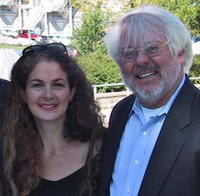
Quick Link
for your convenience!
Human
Rights, Youth Voices etc.
For
Information Concerning the Crisis in Darfur
Whistleblowers
Need Protection

|
|
|
|
Channel your energy with this Chinese therapy
Times of India
December 30, 2008
MUMBAI:
It's a spiritual practice that's become globally famous thanks to the history of
oppression surrounding it. Falun gong, a Chinese spiritual therapy, hit
headlines around the world after it was banned in 1999 by the Jiang Zemin
government and thousands among its 70 million followers were imprisoned and
tortured. But in the city, the practice, which has been around for a few years,
is entirely apolitical.
It's hard to understand the brutality of the
Chinese crackdown on Falun gong - also known as Falun dafa - which comprises an
innocuous set of five meditative exercises and the tenets of truthfulness,
compassion and tolerance. Practised in 80 countries, falun gong was first
brought to Mumbai in 2000 by a group of foreign practitioners who held a
nine-day seminar in Bandra, says Suren Rao, follower and ad film-maker. Falun
Dafa India was registered as an association only in 2004.
Rao, who
exudes the beatitude one usually finds in godmen, found his calling in falun
gong after trying his hand at various spiritual techniques. "I did Art of
Living, yoga, t'ai chi, vipasana,'' he said. "But in the last seven years I
haven't done anything else.'' Rao is part of a small band of followers in the
city who teach falun gong to groups of people free of cost. What the practice
chiefly does is unblocks energy channels within the body, he explains. As a
result, followers feel buoyant and rejuvenated. Many have claimed that
long-drawn illnesses vanished after they became falun gong
practitioners.
A mathematics professor at Mumbai University says she
was suffering from spondylitis for 20 years before falun gong cured it. "In the
past five years, I haven't been to a doctor,'' she says. "Things I found
strenuous five years ago don't bother me any more. Recently a piece of heavy
furniture fell on my foot - I expected to suffer a fracture but after a brief
spell of pain, it was alright as the relaxation that falun gong provides goes
through muscles and bone.''
Rajeev Kumar, an official with Central
Railways, used to suffer from high blood pressure. Within a month of learning
falun gong from a group of foreigners in Delhi in 2002, he noticed his health
improving. Soon he stopped taking the medication his doctors had said he would
have to take his entire life.
Even though no one has anything but
praise for falun gong, the number of serious practitioners in Mumbai is limited
to a handful. In Bangalore, on the other hand, over 50 schools have taught their
students the practice. Rao attributes falun gong's minor presence in the city to
brief attention spans. "People are into window-shopping of exercises,'' he
points out. "They want quick fix solutions. If it doesn't work, they move on to
another practice.''
The practice is the primary focus of falun gong
followers in India, unlike other countries where campaigns are on to get the
Chinese government to lift the ban. Friends of Tibet, a group that lobbies for
Tibetan independence, has tried to court Indian falun gong members on the
grounds that they face a common opposition. But the Indian falun gong followers
would rather be non-political, Rao says.
That doesn't stop them from
being sensitive to the troubles of their counterparts on the mainland. Three
weeks ago, Falun Dafa India hosted a travelling exhibition of art done by falun
gong followers who had faced persecution in China. In one painting, a girl holds
a box of ashes that bears a picture of her parents. She's standing outside
Masanjia labour camp, where many falun gong members are said to have been
tortured. Another work of art shows a woman being led away by the police.
Surrounded by a halo, her child holds a copy of Zhuan Falun, the main text read
by practitioners, as a symbol of future hope.
The Mumbai University
professor says that knowing about the Chinese government's persecution of falun
gong members deepened her appreciation of the practice. "These are people who
practice truthfulness, compassion and tolerance,'' she says. "How do they react
(to torture)? Can you endure it when you're put through torture? That is the
real test.''
|
|
